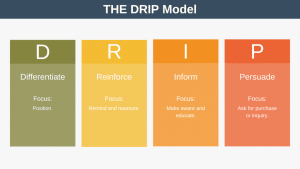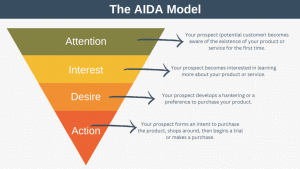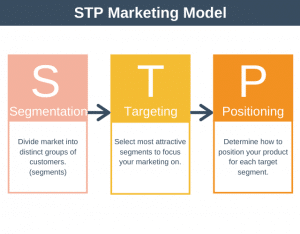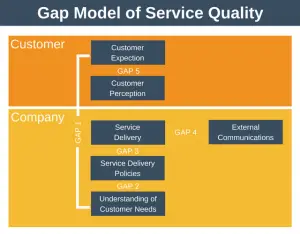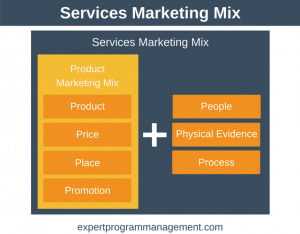The purpose of a marketing funnel (sometimes called a purchasing funnel) is to illustrate the hypothetical journey a customer takes in going from someone who knows nothing about a company to a customer of that company. Basically, a marketing funnel is designed to turn leads into customers.
The idea is that the marketer shows their advertisements to a broad array of their ideal potential customers, and then nurtures those leads slowly over time through the funnel, reducing the number of potential customers at each stage of the funnel, until eventually those leads that arrive at the bottom of the funnel become customers.
The concepts you’ll learn in this article apply equally to both the online and offline advertising world.
The Classic Marketing Funnel
Let’s begin by looking at the classic marketing funnel which I’m sure most of you will be familiar with:
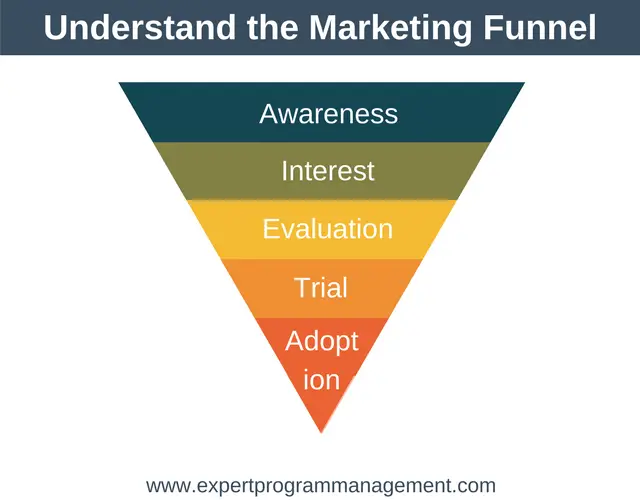
Now, before we begin I should state that this funnel is for illustrative purposes only. There is no such thing as a marketing funnel as drawn above, only a series of interactions people go through with your company (and other companies) as they make their way from being a complete stranger to a loyal customer. In short, each marketing funnel is unique.
Here is what each step of the funnel means in the above diagram:
- Awareness: Someone notices your business or offer, for example, maybe they see an ad on LinkedIn or a tweet.
- Interest: You have their awareness and now they decide to find out a bit more about you, for example, maybe they download a free guide.
- Evaluation: In this stage of the funnel you have their interest and they are working out whether you are credible, for example, do you have past customers who back up what you say.
- Trial: They have evaluated you and you look both trustworthy and as though you can solve their problems, so they decide to do business with you in some small way.
- Adoption: This is where they finally decide to become a customer.
Note that how much a company will be prepared to pay to turn an unknown prospect into a customer will very much depend on the lifetime value of that customer (LTV) to the business.
Adding Time to Our Marketing Funnel
To layer up our funnel slightly, another dimension to consider is the time customers are prepared to devote to interacting with a company at each stage of the funnel.
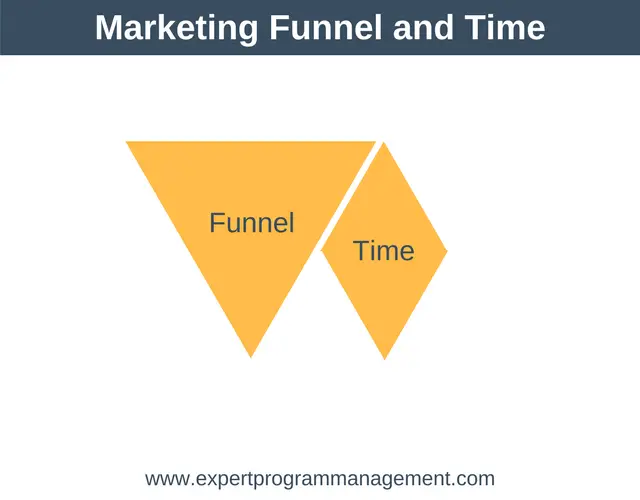
As you can see, initially people have very little time for you as you’re just another voice amongst thousands competing for their attention. As they start to investigate you further they begin to devote more and more time, however, once they have evaluated you and are beginning to trust you, they dedicate less and less time to you.
It is important to understand how the time dimension impacts your marketing. It can be tempting to bombard prospects with information as soon as they express interest in you, and it’s easy to see why companies do this as they want to show everything they’re capable of, but this isn’t what prospects want.
Rather than initially send your prospect a huge case study once you’ve peaked their interest, perhaps it might be better to send them a single page containing a bullet point list of the results you’ve achieved for others. Yes, it might just take 30 seconds to digest, but it gives them what they want to know (not what you want them to know) and if they like what they read then they can start to evaluate you.
Another way to think about the time dimension is to consider if you’re connecting prospects with the right information at the right time, for example, if you are using case studies, are they just sitting there on your website, or would it perhaps be better to send a couple of case studies that can be digested in under 5 minutes out to new prospects automatically three weeks or so after they first expressed interest in you?
Adding Emotion and Logic to our Marketing Funnel
Now that we understand how time interacts with our funnel, it’s time to add our final dimensions to the funnel, emotion and logic.
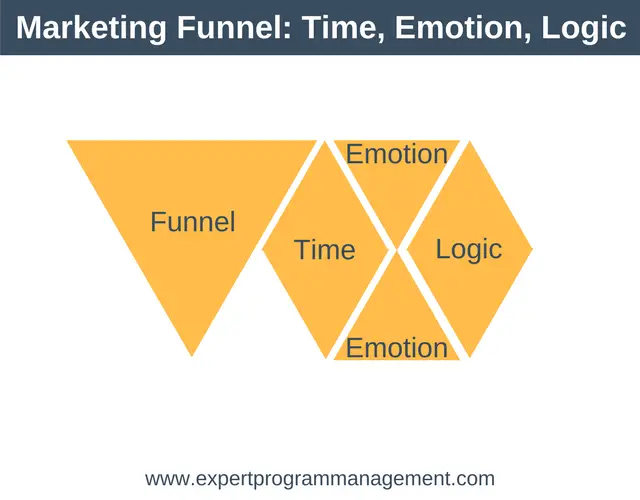
Emotion and logic are inversely related as a person moves through your funnel. Emotion and logic are directly related to your messaging as someone moves through the funnel.
It begins when you use emotion to capture their attention (maybe they feel a certain way or identify with others that do), once you have their attention you need to use logic to show them you’re good at what you do and can address the requirements they have. Finally, to seal the deal and make them a loyal customer you need to use emotion. Emotion is a powerful tool in getting prospects across the line once they have reached the penultimate stage of your funnel.
Understand the Marketing Funnel: Examples
To make the information presented above really clear let’s consider a couple of examples. The first example is from the online world and the weight loss industry, and the second example is from the print world and the real estate industry.
Example 1: Online Funnel – Weight Loss
The first example we’re going to consider is for a weight loss firm that displays their ads via Facebook. In this example the ad is nothing more than an image of a smiling man holding up a t-shirt that is obviously several sizes too big for him. The implication is obviously that this man has lost lots of weight using this company.
Before we continue, the complete marketing and sales funnel for this weight loss company is shown below:
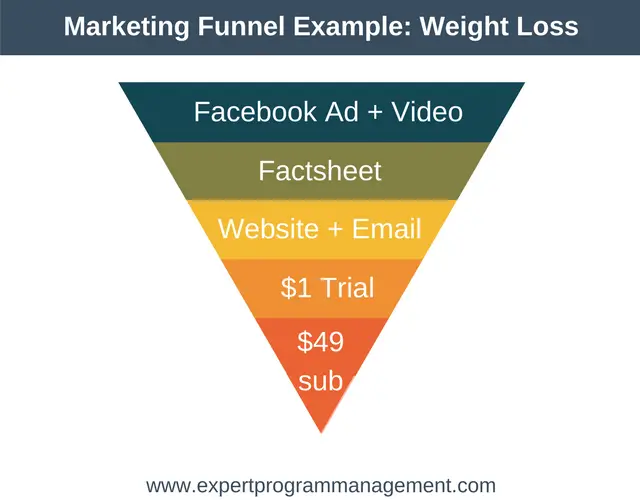
The ad described above equates to the Awareness part of our funnel. It’s simply trying to grab the attention of prospects to get them to click on it. When they do a 15-second video plays of the man explaining how great the company’s program is. At this point we’re still in the Awareness part of the funnel.
At the end of the video an offer is presented to enable the potential customer to download a case study telling the story of 100 customers who’ve been super happy with the company and lost lots of weight using their program. To download the case study the prospect must enter their email address.
Upon entering their email address they are now in the Evaluation stage, where they (possibly) read the case study, browse the company’s website, and receive regular emails from the company. After a few weeks the prospect receives an email explaining that they can trial the service for 1-month for just $1. At the end of the month they will be taken onto the regular subscription price of $49 per month, but they can cancel their subscription easily anytime within that first month.
Signing up to the trial provides a low barrier way to acquire a customer and the customer enters the Trial part of our funnel. If at the end of the month they are enjoying the company’s service and are happy with it, they then move to the full price subscription. At this point they are a full customer and they have entered the Adoption part of the funnel.
Notice how this happens automatically without the customer having to do too much. This makes sense because at this stage in the funnel they are choosing the use the firm because they like the firm and are making an emotional decision so don’t have to invest much time. In fact, they may have experienced more friction when it came to signing up to the trial in the first place. This is because at that stage of the marketing funnel they are using more logic and less emotion than at the later stage of the funnel.
Example 2: Physical Funnel – Real Estate
In this example imagine a real estate company that prints an ad for their services on a piece of card. On the card it doesn’t say too much about the company but simply shows pictures of some houses sold locally by the company and the prices those houses achieved. The cards also contain a link to the company’s website should the prospect wish to find out further information about the company’s services. These cards are then posted through the letterboxes of everyone who lives where the best buyers are for this business are. The complete marketing funnel for this real estate company is shown below.

Now, at any given time maybe less than 1 in 100 people are ready to sell their house, but by sending these mailings out consistently, month-on-month over a period of years, the company is building top-of-mind awareness (the first level of our funnel) for when they are ready to sell, even if that takes 5 years or more! Notice how the cards contain very little information because people won’t invest much time on the company at this stage in the funnel, and notice how using the prices the firm has achieved in the area tries to emotionally connect with the homeowner.
The link to the company’s website provides a way for the house owner to get further information about their services (the Interest section of of funnel). Here, as they’re prepared to invest more time they can research the results the firm has achieved, their average sale price, their average sale time etc. The website also offers a no obligation free valuation.
If they pursue this valuation this takes the customer further down the funnel into the Evaluation/Trial phase. At this point they are offered the opportunity to market their property on a no-win-no-fee basis. The homeowner will have already done their research on the company (the Evaluation phase), and so this relatively frictionless offer where no money exchanges hands is an easy way to move the homeowner further down the funnel to the Trial phase.
Once the house is sold and the homeowner is in the process of moving the homeowner finally moves to the final phase of this funnel – the Adoption phase.
Understanding Conversions and Costs
An important term to understand when learning about marketing funnels is conversion rate. A conversion rate simply defines how many of one thing became another thing. In terms of our marketing funnel this could mean how many of the people who clicked on an ad became customers, or it could mean how many people who had a consultation went on to become customers.
An example can make this easier to understand. Have a look at the hypothetical sales funnel below, complete with costs.
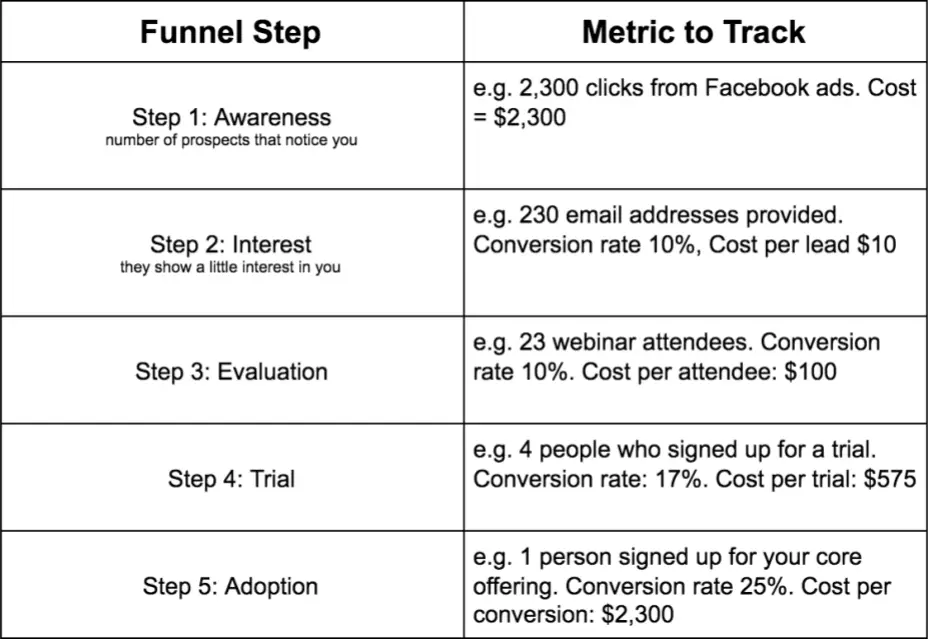
As you can see from the diagram the total cost for the advertising campaign was $2,300. The campaign received 2,300 clicks from Facebook ads. Of these 2,300 people who clicked on the ad, 230 expressed interest by entering their email address in exchange for a download. A conversion rate of 10%.
At this point the company nurtured these leads and offered them the opportunity to attend a webinar. 23 prospects attended this webinar. Again, a conversion rate of 10% from the people who entered their email address, at a cost of $100 per attendee.
Of those people who attended the webinar, 4 signed up for a trial. A conversion rate of 17%. Finally, 1 of those 4 people went on to become a customer, a conversion rate of 25%. The total cost to acquire one customer was thus $2,300.
Understanding Marketing Funnels: Summary
The classic marketing funnel shows the hypothetical journey a customer goes on as they move from being unknown to a company to being a customer. The key to understanding marketing funnel theory is to realise that at each stage of the funnel some customers will be lost, but others will be nurtured one step closer to becoming a customer.
Every business will employ a marketing funnel, from the corner store to Apple, it’s just that the complexity of the funnel will differ. Because every company uses funnels to some degree, it can be useful to to have a basic understanding of marketing funnels regardless of whether you happen to work in marketing or not.
In this article we’ve shown you two example funnels from the real world, along with a hypothetical funnel to help you to understand the costs and conversion rates associated with a typical funnel.

